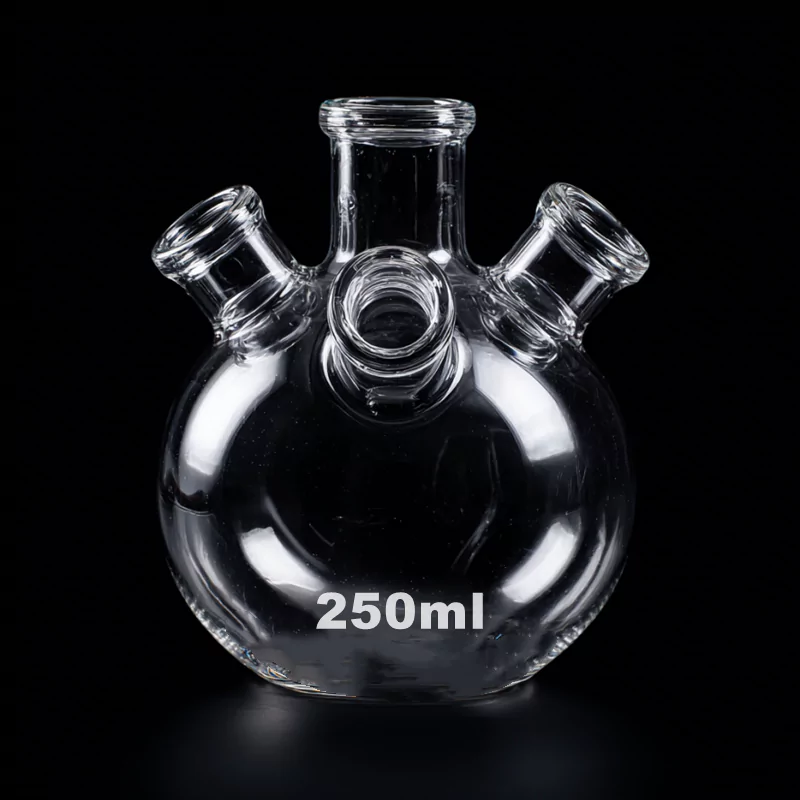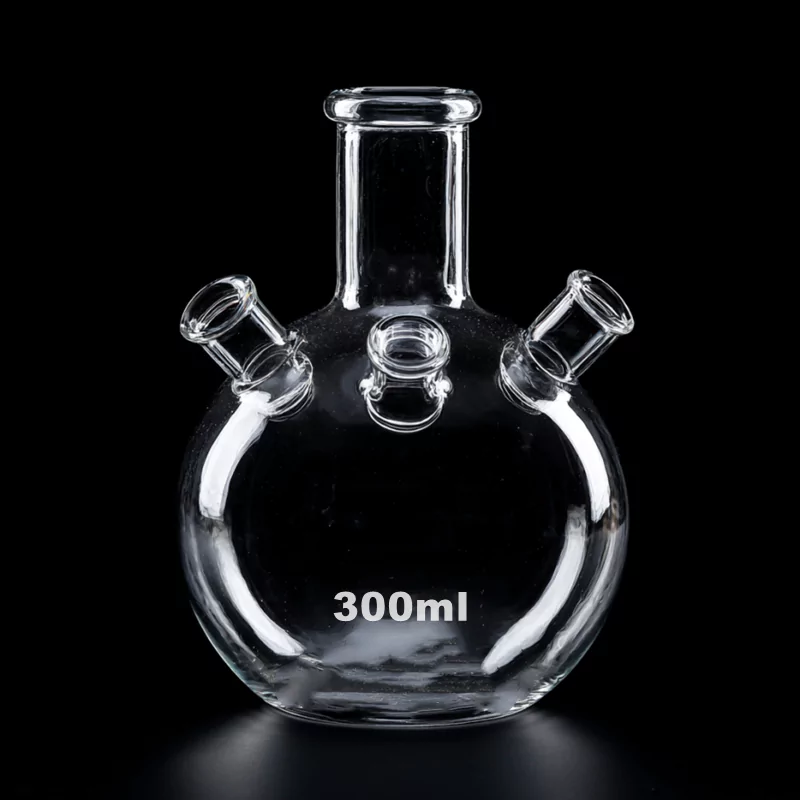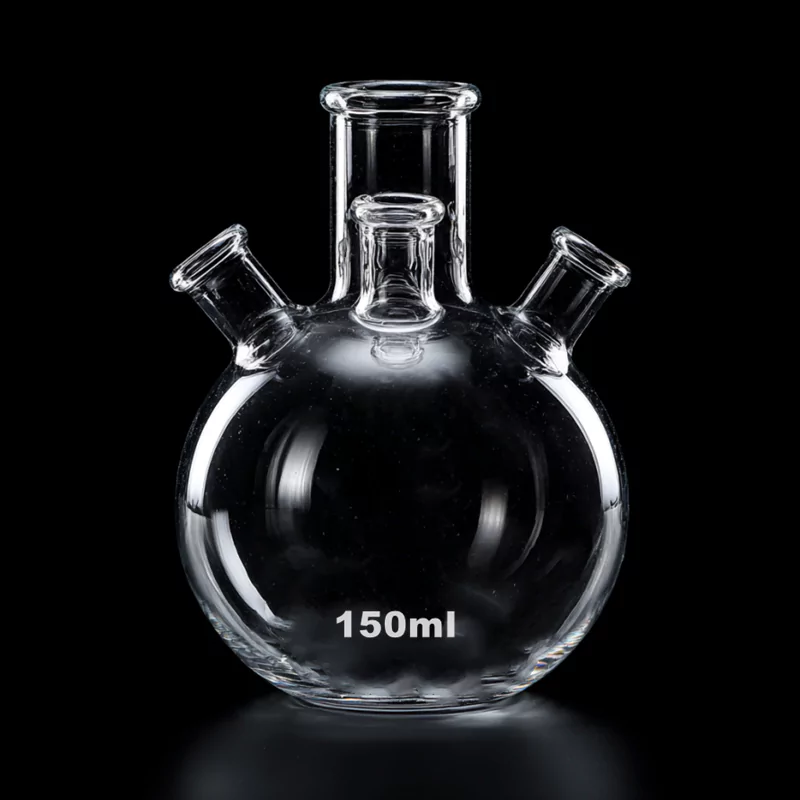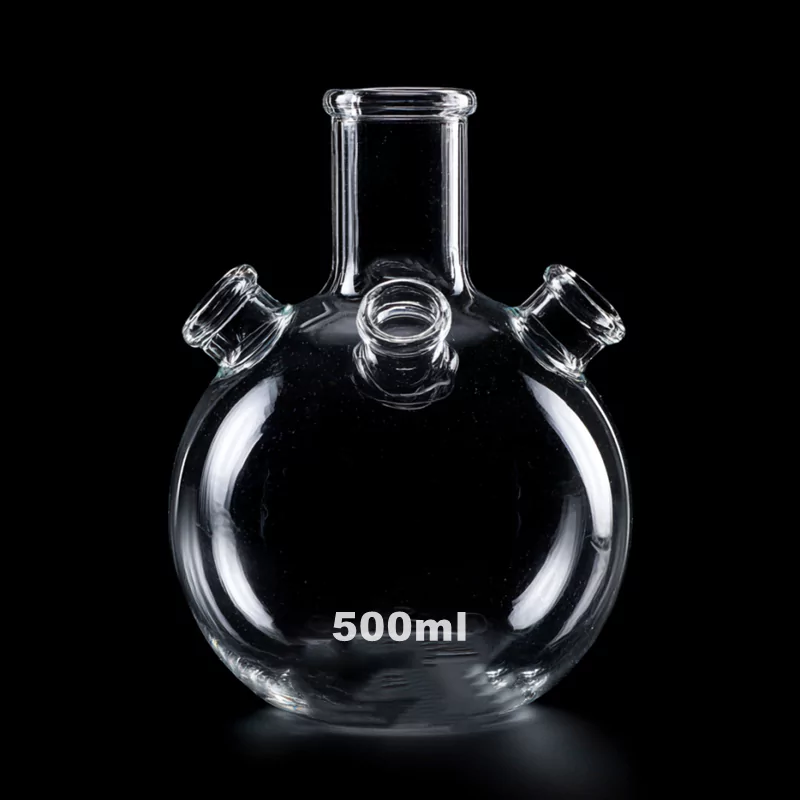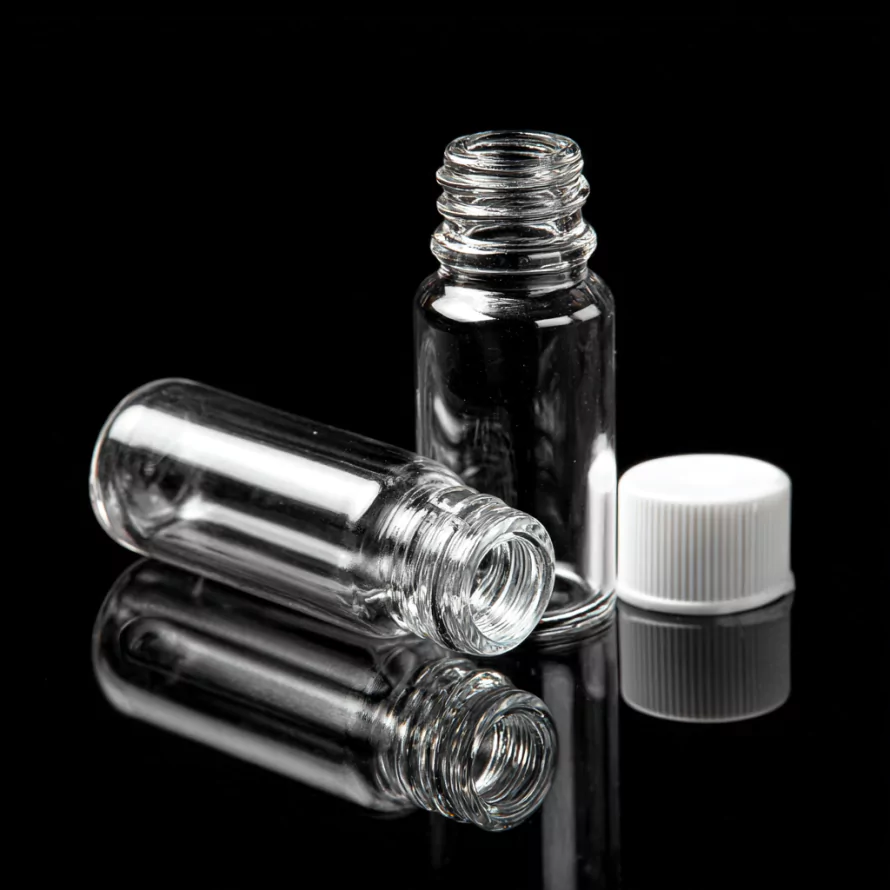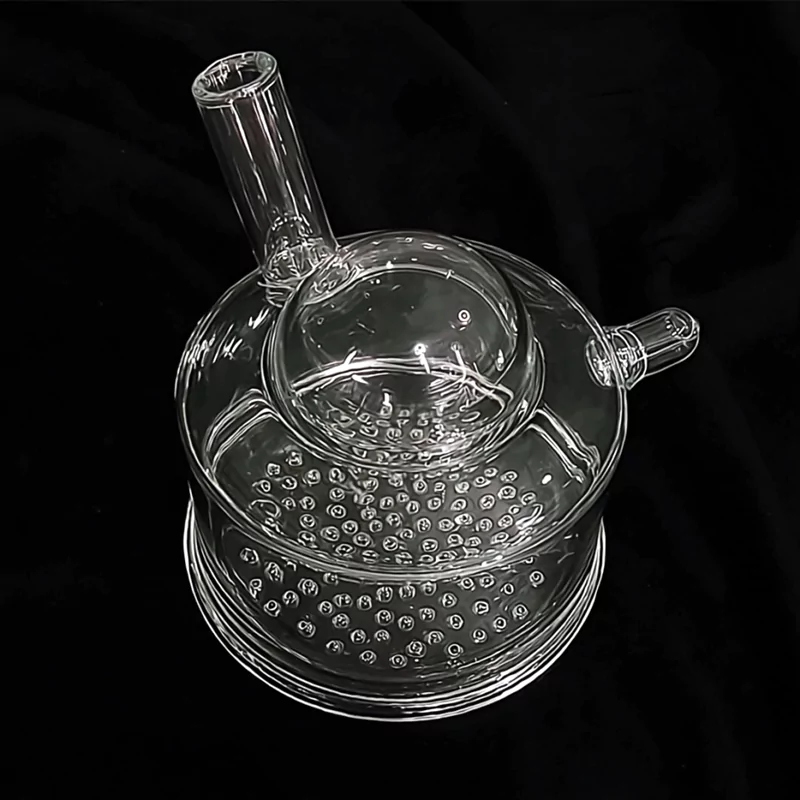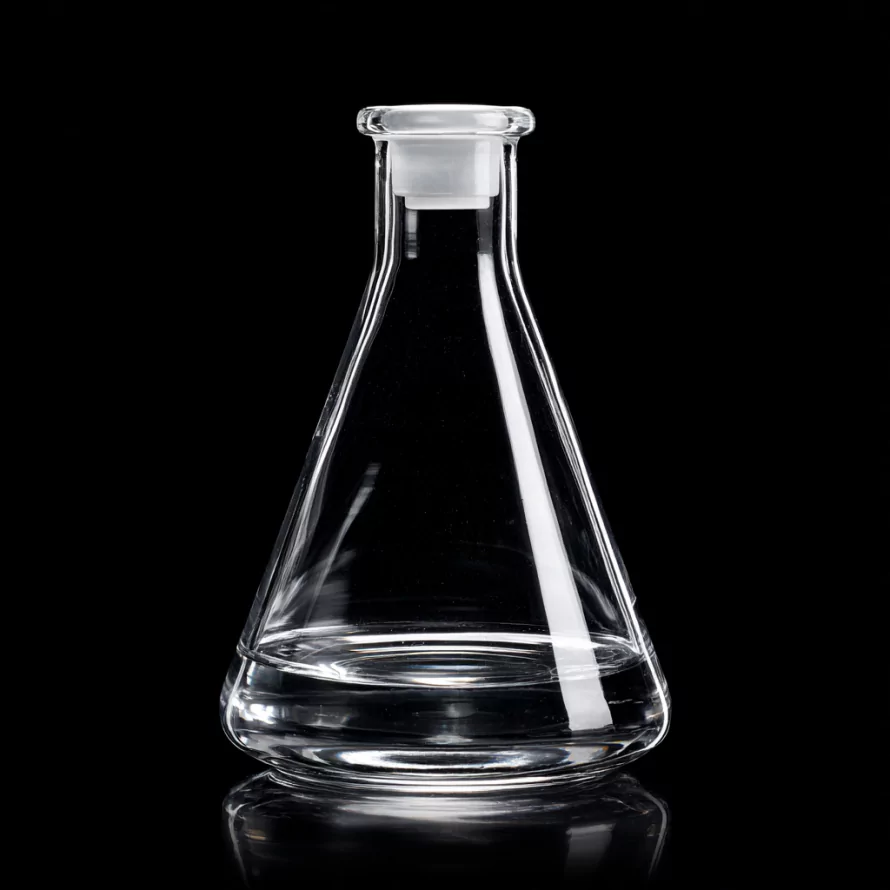- Home
- /
- Types
- /
- Quartz Bottle
- /
- Process-Optimized 4-Neck Quartz Florence...
Process-Optimized 4-Neck Quartz Florence Flask with Round Bottom for Controlled Reactions -TOQUARTZ®
Features of 4-Neck Quartz Florence Flask
TOQUARTZ® 4 neck florence quartz flasks with round bottom are manufactured using high-purity quartz materials with advanced processing techniques to ensure exceptional performance in laboratory and industrial applications. These specialized flasks provide researchers with versatile, reliable vessels for complex chemical reactions and synthesis procedures.
Material Properties
-
High Purity:
99.99% SiO₂ content, providing superior chemical inertness for sensitive reactions -
Thermal Stability:
Operating temperature up to 1200°C with excellent thermal shock resistance -
Thermal Stability:
Operating temperature up to 1200°C with excellent thermal shock resistance -
Chemical Resistance:
Excellent stability against acids, bases, molten salts, and fluorinated gases
Design Features
-
Multi-neck Configuration:
Four necks strategically positioned for simultaneous introduction of reagents, temperature monitoring, and gas exchange -
Precision Ground Joints:
Standard ground glass joints for secure, airtight connections with other laboratory glassware -
Florence Design:
Enables uniform heating and prevents dead spots during reactions -
Optical Clarity:
Transparent to visible and UV light, allowing for visual monitoring of reaction progress

- 99.99% SiO₂ Purity
- Chemical Resistance
- Precision Joints
Technical Specifications & Dimensions of Quartz Glass Flask
Technical Specifications of 4-Neck Fused Quartz Florence Flask Round Bottom
Physical Properties
| Property | Value |
| Density | 2.2 g/cm³ |
| Fracture Modulus | ≥350 MPa |
| Thermal Conductivity | 120-160 W/m·K |
| Thermal Expansion Coefficient | 5.5×10-7/K |
| Maximum Working Temperature | 1200°C |
Chemical Properties
| Property | Value |
| SiO₂ Content | ≥99.99% |
| Chemical Resistance | Excellent to acids, bases, salts |
| Hydrolytic Resistance | Class 1 (USP) |
| UV Transmission (254nm) | ≥80% |
| Visible Light Transmission | ≥90% |
Dimensions of 4-Neck Quartz Glass Florence Flask Round Bottom
| Model | Capacity (ml) | Joint Size | Dimensions (mm) | SiO2 Content(%) |
| AT-SY-SP1024 | 250 | 24/19/19/14 | 80*132 | 99.99 |
| AT-SY-SP1025 | 500 | 24/19/19/14 | 106*147 | 99.99 |
| AT-SY-SP1026 | 1000 | 24/19/19/14 | 140*200 | 99.99 |
| AT-SY-SP1027 | 2000 | 24/19/19/14 | 173*242 | 99.99 |
| AT-SY-SP1028 | 5000 | 40/24/24/14 | 235*335 | 99.99 |
TOQUARTZ® Solving Challenges with 4 Neck Florence Quartz Flasks
4-Neck Quartz Florence Flask for Photochemical Reaction Systems
Key Advantages
-
UV Transparency at 254nm ≥ 80%
Enables efficient photon penetration for photochemical reactions requiring UV activation. -
Ion Leaching Rate < 0.01 ppm/hour
Maintains purity in sensitive photochemical systems over extended reaction times. -
Multi-Neck Light Source Integration
Allows simultaneous top and side UV lamp access without modifying the vessel.
TOQUARTZ® solution
A Canadian photochemistry lab working on UV-initiated polymerization reported inconsistent yields due to borosilicate flask UV absorption and contamination. After switching to TOQUARTZ® 4-neck quartz florence flasks, UV transmission increased by 35%, and reaction reproducibility improved by 22%. The multi-neck design allowed direct integration of dual UV sources and a fiber optic sensor, reducing setup time by 40%.
4-Neck Fused Quartz Florence Flask for Controlled Atmosphere Metal Oxide Synthesis
Key Advantages
-
Gas Permeability < 10⁻⁷ cm³/s
Ensures minimal oxygen diffusion during inert gas synthesis of sensitive metal oxides. -
Thermal Uniformity ±2°C at 1000°C
Maintains consistent temperature profiles critical for phase-pure oxide formation. -
Neck-to-Neck Distance ≥ 45mm
Accommodates simultaneous gas flow, thermocouple, and powder feeder without interference.
TOQUARTZ® solution
A Polish research institute developing ZnO nanostructures under argon atmosphere faced contamination from ambient air using standard glassware. With TOQUARTZ® 4-neck quartz florence flasks, oxygen levels inside the vessel dropped below 0.1 ppm, verified by inline sensors. The result was a 30% increase in ZnO crystallinity and a 15% reduction in defect density, confirmed via XRD and SEM analysis.
4-Neck Quartz Glass Florence Flask for Continuous Flow Reaction Prototyping
Key Advantages
-
Flow Port Compatibility with 1/4" PTFE Tubing
Supports direct connection to standard lab-scale flow systems without adapters. -
Wall Thickness Uniformity ±0.2mm
Ensures consistent heat transfer and pressure resistance during flow operation. -
Sampling Port Isolation ≥ 99.5%
Allows real-time sampling without disturbing flow dynamics or pressure balance.
TOQUARTZ® solution
A U.S.-based contract research organization (CRO) needed to prototype a continuous nitration process at 90°C with real-time sampling. Using TOQUARTZ® 4-neck quartz florence flasks, they integrated a peristaltic pump, thermocouple, and sampling needle in one vessel. This reduced prototype setup time by 60% and enabled 12 successful iterations in 3 days, compared to 4 iterations using traditional glassware.
TOQUARTZ® Customization Services for Quartz Glass Flasks
Joint Configuration
-
Custom joint sizes
(14/10, 19/22, 24/29, 29/32, 45/50) - Special angle positioning
- Additional neck options
- Specialized joint types
Dimensional Modifications
- Custom capacities beyond standard sizes
- Modified wall thickness for specific applications
-
Special bottom configurations
(flat or custom radii) - Integration features for equipment mounting
Material Specifications
-
Specialized surface treatments
(frosted, etched) - Graduated volume markings
- Custom identification engraving
- Specialized annealing for extreme applications
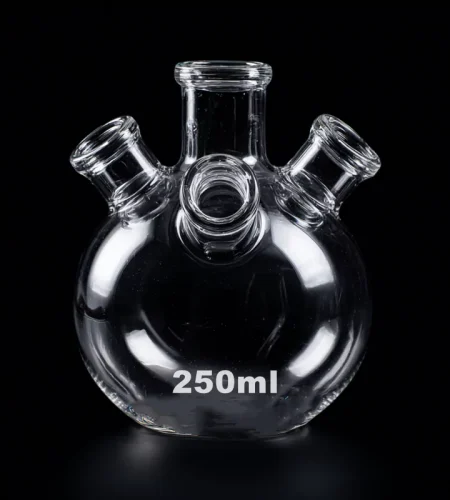
Customization Process
At TOQUARTZ®, we offer a structured and engineer-led customization process to help clients develop 4-Neck Quartz Florence Flasks tailored to their specific experimental or equipment integration needs. Whether you require non-standard joint sizes, unique neck angles, or special wall thicknesses, our team ensures that every 4-Neck Quartz Florence Flask is designed with precision and delivered with consistency.
Technical Requirement Consultation
- TOQUARTZ® engineers work directly with your R&D or procurement team to understand the intended application of the 4-Neck Quartz Florence Flask, including temperature range, chemical compatibility, and connection interfaces.
CAD Drawing & Design Confirmation
- We provide detailed technical drawings based on your specifications. All 4-Neck Quartz Florence Flask designs are reviewed for manufacturability and performance before production.
Prototype Fabrication & Testing
- A sample unit is produced for dimensional and functional validation. This step ensures the customized 4-Neck Quartz Florence Flask meets your operational requirements before full-scale production.
Batch Production & Quality Control
- Once approved, we proceed with production under strict QC protocols. Each 4-Neck Quartz Florence Flask is inspected for joint tolerance, wall thickness uniformity, and material purity.
Usage Guidelines of 4-Neck Quartz Florence Flask with Round Bottom
Proper handling, maintenance, and operation of quartz flasks ensures optimal performance, experimental accuracy, and extended product lifespan. The following guidelines cover essential aspects of working with 4 neck florence quartz flasks in laboratory settings.
Safe Handling and Setup
-
Support Requirements:
Always use appropriate support equipment such as florence flask holders, rings, or specialized clamps to securely position the flask during experiments. -
Heating Procedures:
Heat gradually to prevent thermal shock. For optimal thermal transfer, use heating mantles or sand/oil baths rather than direct flame heating. -
Joint Connections:
Apply thin layers of appropriate grease to ground glass joints to ensure airtight seals. For high-temperature applications, use specialized high-temperature joint grease. -
Maximum Fill Level:
Do not fill beyond 2/3 of the flask capacity to allow for expansion, boiling, and safe handling.
Cleaning and Maintenance
-
Cleaning Procedure:
Clean immediately after use. For most applications, rinse with appropriate solvents followed by distilled water. For persistent residues, use mild laboratory detergents or appropriate acid solutions. -
Drying Methods:
Air dry in an inverted position or use laboratory ovens at temperatures not exceeding 120°C. Avoid rapid temperature changes during drying processes. -
Storage Recommendations:
Store in protective cases or padded storage cabinets. Avoid stacking or placing heavy items on flasks to prevent stress points. -
Inspection Protocol:
Regularly inspect for chips, cracks, or stress lines, particularly around joints and necks. Replace damaged flasks immediately regardless of the severity of damage.
Safety Precautions
-
Pressure Considerations:
Never seal all openings simultaneously when heating contents. Always provide a pressure release path through an appropriate setup. -
Temperature Gradients:
Avoid exposing different parts of the flask to extreme temperature differences, which can cause stress fractures. -
Personal Protection:
Always use appropriate safety equipment when handling high-temperature or vacuum applications, including face shields and heat-resistant gloves. -
Chemical Compatibility:
While quartz is highly resistant to most chemicals, always verify compatibility with specific compounds, particularly concentrated alkaline solutions at high temperatures.
Need Engineering Support for Your 4 Neck Florence Quartz Flask Project?
Get expert advice on material specifications, design considerations, and custom solutions.
Why Partner with TOQUARTZ
Direct Factory Advantage
As a direct manufacturer, we can cut out the numerous intermediate links.
Engineering Expertise
Technical team guides clients from material selection to design optimization, translating specs into deliverables.
Flexible Manufacturing
Handling standard & custom orders via small-batch expertise and prototyping rigor to meet urgent deadlines.
Quality
Assurance
Pre-shipment 3-step validation:
1. dimensional accuracy,
2. material purity ,
3. performance thresholds
Global Supply Chain
Reliable global logistics to industrial hubs (DE/US/JP/KR priority) with trackable milestones.
Releted Products
As a specialized manufacturer with direct factory capabilities, TOQUARTZ provides both standard and custom quartz solutions with engineering support throughout the specification and implementation process.
FAQ
Q: What is a 4 neck florence flask used for?
A: A 4 neck florence quartz flask is primarily used for complex chemical reactions requiring multiple access points. The four necks enable simultaneous reagent addition, temperature monitoring, gas inlet/outlet, and reflux or distillation setup. Common applications include organic synthesis, material science research, and high-temperature chemical reactions where multiple components need to be controlled simultaneously.
Q: What are the safety precautions for using 4 neck florence flasks?
A: Always use proper support equipment (clamps, stands) to secure the flask. Never heat an empty flask or apply direct flame. Ensure at least one neck remains open or connected to pressure-relief apparatus when heating. Inspect for cracks or damage before each use. Use appropriate heat-resistant gloves when handling hot flasks. Never rapidly cool a hot flask. For vacuum applications, use properly rated flasks and safety shields. Always follow your laboratory’s standard safety protocols.
Q: How do I select the right size 4 neck florence quartz flask for my application?
A: Consider the reaction volume, allowing sufficient headspace (typically fill to no more than 2/3 capacity). Factor in any volume changes during the reaction. Consider heating method and available support equipment. For vacuum applications, smaller flasks have greater strength. For high-temperature applications, consider wall thickness. If using mechanical stirring, ensure adequate volume for effective mixing. For complex apparatus setups, ensure the flask size accommodates all required attachments.
Q: What are the typical joint sizes available for 4 neck quartz flasks?
A: Standard configurations typically include one larger center joint (24/40 or 29/42) with three smaller joints (14/20 or 19/22) at angled positions. Custom configurations can be ordered with any combination of standard joint sizes (14/20, 19/22, 24/40, 29/42, 45/50) to match specific equipment requirements. Joint angle positioning can also be customized for specific experimental setups.
Q: How should I clean a 4 neck florence quartz flask?
A: For general cleaning, rinse with appropriate solvents immediately after use, followed by washing with mild laboratory detergent and distilled water. For persistent residues, use dilute acids (HCl or HNO₃) or specialized laboratory cleaning solutions. Avoid using abrasive materials or brushes with metal components. After cleaning, rinse thoroughly with deionized water and allow to dry completely. For high-purity applications, an acid bath followed by ultrapure water rinse is recommended.
Contact our engineering team for technical consultation and pricing. We’ll help you select the optimal specifications for your application requirements.


